- Home
- William Shakespeare
Julius Caesar Page 17
Julius Caesar Read online
Page 17
We felt [the double reporting of Portia’s suicide] was very clear: when Brutus reveals to Cassius that he knows about the death there is a deeply honest moment between the two men, which is clearly because of what they have just been through in the row together, and then when the other two men come in Brutus, in the Stoic tradition, fakes ignorance of it in order that he may show us the truly Stoic reaction, which is untrue, in order to keep the morale of his men high. When Messala tells him that she is dead he replies, “We all die, we must all die”; that is the Stoic reaction that he knows people are expecting from him, and it is important that he gives it to them at a time of potentially low morale amongst the army. The reality is completely different and it is a brilliant piece of writing.
Bailey: There are only two named female parts in Julius Caesar. Both are brilliantly portrayed. Portia: proud, aristocratic, daughter of the republican Cato, married to Brutus, the talented statesman and descendant of the liberator of Rome; and Calpurnia, equally proud and high class, but an army wife, used to her husband’s long absences and to his obstinacy. Both are strong persuasive women who love their husbands and are loved back. The scenes are cleverly placed to allow us to glimpse the domestic man behind the political front. In Brutus’ case it’s only when he is alone with Portia that we perceive his immense capacity for tenderness, and also witness the terrible strain and inner turmoil that has taken place since he was asked to join the conspiracy.
During our early rehearsals we explored their relationship as soulmates, as twins, utterly dependent and deeply entwined with each other. This informed the scene, making it clear that any denial of each other would cause internal harm. Portia’s instability and fear of abandonment is already discernible in their first scene together, and anticipates her suicide, two year later. This reading of their marriage influenced our decision to keep the two consecutive reports of her death. The first time we hear of her death is when a distraught Brutus confides the terrible news to Cassius. It’s a deeply moving moment between the two men, following on from their violent quarrel. It is followed straight away by the arrival of one of their generals who delivers the news to Brutus. He pretends that this is the first time he has heard it, and reacts with Stoic fortitude that impresses the soldiers. It’s a piece of public display, and hints at a growing madness in Brutus.
8. Brutus (Sam Troughton) and Portia (Hannah Young) in Lucy Bailey’s 2009–10 production for the RSC at the Courtyard Theatre: “In Brutus’ case it is only when he is alone with Portia that we perceive his immense capacity for tenderness … we explored their relationship as soulmates, as twins, utterly dependent and deeply entwined with each other.”
Did the little scene of the lynching of Cinna the Poet seem to you especially significant—given that Shakespeare was a poet?
Hall: Yes. Cinna the Poet represents the free thinker, somebody apolitical, so I think it significant. It is always significant when Shakespeare writes about poets because he is writing about half of his mates, the people who would be watching and himself. Sean Hannaway was hung upside down over the stage by one foot—once they’d murdered him they strung him up and he then hung upside down over the next scene while Octavius, Lepidus, and Mark Antony planned who was going to die and who was going to live; he trained for six weeks to do that—because he was upside down all the blood was rushing to his head—but it was an image taken from Mussolini’s death, that famous picture of Mussolini hanging upside down, and that was quite visually striking. That whole section is really important to me because it shows in microcosm the kind of madness that can take over a large group of people when their blood is up. Let me make this analogy: it’s the same kind of atmosphere that George W. Bush created with his “you are either for them or against them” culture. “If you are not for me, you are against me so that makes you for the terrorists and Al-Qaeda.” You couldn’t discuss with Bush or Blair what they were doing because if you did the inference was that you were antipatriotic. That’s very dangerous. That’s the kind of fever that those two whipped up, and it’s the kind of fever that was whipped up when Cinna the Poet was murdered, and it’s the kind of fever that was whipped up in Cade’s revolt in Henry VI where they search out anybody that can read and write: “The first thing we do, let’s kill all the lawyers,” which always gets a big laugh, and then they murder the Clerk of Chatham because he can read.
Farr: Yes. It is one of those talismanic scenes in Shakespeare. He is very good at writing those scenes where the small character who you never see again gains enormous significance, and we placed huge amounts of significance on him in the first scene of our second half. They strung him up to this factory structure and left him hanging there, like a hung-up corpse in an old abattoir, and he stayed there throughout the whole next scene, just hanging there. We even gave him a strange, morbid song after his death, so he was an important talisman in our production.
Bailey: The significance of Cinna’s death is that it is a terrifying piece of arbitrary violence inflicted on a civilian. It is made the more poignant because Cinna is an artist, who deals with words, not blows. Mark Antony’s speech unleashes mob hysteria, which leads to riots, killings, and the burning of Rome. Cinna’s death is the turning point in the play. Thousands more ordinary men and women will be cruelly slaughtered in the name of revenge.
SHAKESPEARE’S CAREER
IN THE THEATER
BEGINNINGS
William Shakespeare was an extraordinarily intelligent man who was born and died in an ordinary market town in the English Midlands. He lived an uneventful life in an eventful age. Born in April 1564, he was the eldest son of John Shakespeare, a glove-maker who was prominent on the town council until he fell into financial difficulties. Young William was educated at the local grammar in Stratford-upon-Avon, Warwickshire, where he gained a thorough grounding in the Latin language, the art of rhetoric, and classical poetry. He married Ann Hathaway and had three children (Susanna, then the twins Hamnet and Judith) before his twenty-first birthday: an exceptionally young age for the period. We do not know how he supported his family in the mid-1580s.
Like many clever country boys, he moved to the city in order to make his way in the world. Like many creative people, he found a career in the entertainment business. Public playhouses and professional full-time acting companies reliant on the market for their income were born in Shakespeare’s childhood. When he arrived in London as a man, sometime in the late 1580s, a new phenomenon was in the making: the actor who is so successful that he becomes a “star.” The word did not exist in its modern sense, but the pattern is recognizable: audiences went to the theater not so much to see a particular show as to witness the comedian Richard Tarlton or the dramatic actor Edward Alleyn.
Shakespeare was an actor before he was a writer. It appears not to have been long before he realized that he was never going to grow into a great comedian like Tarlton or a great tragedian like Alleyn. Instead, he found a role within his company as the man who patched up old plays, breathing new life, new dramatic twists, into tired repertory pieces. He paid close attention to the work of the university-educated dramatists who were writing history plays and tragedies for the public stage in a style more ambitious, sweeping, and poetically grand than anything that had been seen before. But he may also have noted that what his friend and rival Ben Jonson would call “Marlowe’s mighty line” sometimes faltered in the mode of comedy. Going to university, as Christopher Marlowe did, was all well and good for honing the arts of rhetorical elaboration and classical allusion, but it could lead to a loss of the common touch. To stay close to a large segment of the potential audience for public theater, it was necessary to write for clowns as well as kings and to intersperse the flights of poetry with the humor of the tavern, the privy, and the brothel: Shakespeare was the first to establish himself early in his career as an equal master of tragedy, comedy, and history. He realized that theater could be the medium to make the national past available to a wider audience than the elite who
could afford to read large history books: his signature early works include not only the classical tragedy Titus Andronicus but also the sequence of English historical plays on the Wars of the Roses.
He also invented a new role for himself, that of in-house company dramatist. Where his peers and predecessors had to sell their plays to the theater managers on a poorly paid piecework basis, Shakespeare took a percentage of the box-office income. The Lord Chamberlain’s Men constituted themselves in 1594 as a joint stock company, with the profits being distributed among the core actors who had invested as sharers. Shakespeare acted himself—he appears in the cast lists of some of Ben Jonson’s plays as well as the list of actors’ names at the beginning of his own collected works—but his principal duty was to write two or three plays a year for the company. By holding shares, he was effectively earning himself a royalty on his work, something no author had ever done before in England. When the Lord Chamberlain’s Men collected their fee for performance at court in the Christmas season of 1594, three of them went along to the Treasurer of the Chamber: not just Richard Burbage the tragedian and Will Kempe the clown, but also Shakespeare the scriptwriter. That was something new.
The next four years were the golden period in Shakespeare’s career, though overshadowed by the death of his only son, Hamnet, age eleven, in 1596. In his early thirties and in full command of both his poetic and his theatrical medium, he perfected his art of comedy, while also developing his tragic and historical writing in new ways. In 1598, Francis Meres, a Cambridge University graduate with his finger on the pulse of the London literary world, praised Shakespeare for his excellence across the genres:
As Plautus and Seneca are accounted the best for comedy and tragedy among the Latins, so Shakespeare among the English is the most excellent in both kinds for the stage; for comedy, witness his Gentlemen of Verona, his Errors, his Love Labours Lost, his Love Labours Won, his Midsummer Night Dream and his Merchant of Venice: for tragedy his Richard the 2, Richard the 3, Henry the 4, King John, Titus Andronicus and his Romeo and Juliet.
For Meres, as for the many writers who praised the “honey-flowing vein” of Venus and Adonis and Lucrece, narrative poems written when the theaters were closed due to plague in 1593–94, Shakespeare was marked above all by his linguistic skill, by the gift of turning elegant poetic phrases.
PLAYHOUSES
Elizabethan playhouses were “thrust” or “one-room” theaters. To understand Shakespeare’s original theatrical life, we have to forget about the indoor theater of later times, with its proscenium arch and curtain that would be opened at the beginning and closed at the end of each act. In the proscenium arch theater, stage and auditorium are effectively two separate rooms: the audience looks from one world into another as if through the imaginary “fourth wall” framed by the proscenium. The picture-frame stage, together with the elaborate scenic effects and backdrops beyond it, created the illusion of a self-contained world—especially once nineteenth-century developments in the control of artificial lighting meant that the auditorium could be darkened and the spectators made to focus on the lighted stage. Shakespeare, by contrast, wrote for a bare platform stage with a standing audience gathered around it in a courtyard in full daylight. The audience were always conscious of themselves and their fellow spectators, and they shared the same “room” as the actors. A sense of immediate presence and the creation of rapport with the audience were all-important. The actor could not afford to imagine he was in a closed world, with silent witnesses dutifully observing him from the darkness.
Shakespeare’s theatrical career began at the Rose Theatre in Southwark. The stage was wide and shallow, trapezoid in shape, like a lozenge. This design had a great deal of potential for the theatrical equivalent of cinematic split-screen effects, whereby one group of characters would enter at the door at one end of the tiring-house wall at the back of the stage and another group through the door at the other end, thus creating two rival tableaux. Many of the battle-heavy and faction-filled plays that premiered at the Rose have scenes of just this sort.
At the rear of the Rose stage, there were three capacious exits, each over ten feet wide. Unfortunately, the very limited excavation of a fragmentary portion of the original Globe site, in 1989, revealed nothing about the stage. The first Globe was built in 1599 with similar proportions to those of another theater, the Fortune, albeit that the former was polygonal and looked circular, whereas the latter was rectangular. The building contract for the Fortune survives and allows us to infer that the stage of the Globe was probably substantially wider than it was deep (perhaps forty-three feet wide and twenty-seven feet deep). It may well have been tapered at the front, like that of the Rose.
The capacity of the Globe was said to have been enormous, perhaps in excess of three thousand. It has been conjectured that about eight hundred people may have stood in the yard, with two thousand or more in the three layers of covered galleries. The other “public” playhouses were also of large capacity, whereas the indoor Blackfriars theater that Shakespeare’s company began using in 1608—the former refectory of a monastery—had overall internal dimensions of a mere forty-six by sixty feet. It would have made for a much more intimate theatrical experience and had a much smaller capacity, probably of about six hundred people. Since they paid at least sixpence a head, the Blackfriars attracted a more select or “private” audience. The atmosphere would have been closer to that of an indoor performance before the court in the Whitehall Palace or at Richmond. That Shakespeare always wrote for indoor production at court as well as outdoor performance in the public theater should make us cautious about inferring, as some scholars have, that the opportunity provided by the intimacy of the Blackfriars led to a significant change toward a “chamber” style in his last plays—which, besides, were performed at both the Globe and the Blackfriars. After the occupation of the Blackfriars a five-act structure seems to have become more important to Shakespeare. That was because of artificial lighting: there were musical interludes between the acts, while the candles were trimmed and replaced. Again, though, something similar must have been necessary for indoor court performances throughout his career.
Front of house there were the “gatherers” who collected the money from audience members: a penny to stand in the open-air yard, another penny for a place in the covered galleries, sixpence for the prominent “lord’s rooms” to the side of the stage. In the indoor “private” theaters, gallants from the audience who fancied making themselves part of the spectacle sat on stools on the edge of the stage itself. Scholars debate as to how widespread this practice was in the public theaters such as the Globe. Once the audience were in place and the money counted, the gatherers were available to be extras on stage. That is one reason why battles and crowd scenes often come later rather than early in Shakespeare’s plays. There was no formal prohibition upon performance by women, and there certainly were women among the gatherers, so it is not beyond the bounds of possibility that female crowd members were played by females.
The play began at two o’clock in the afternoon and the theater had to be cleared by five. After the main show, there would be a jig—which consisted not only of dancing, but also of knockabout comedy (it is the origin of the farcical “afterpiece” in the eighteenth-century theater). So the time available for a Shakespeare play was about two and a half hours, somewhere between the “two hours’ traffic” mentioned in the prologue to Romeo and Juliet and the “three hours’ spectacle” referred to in the preface to the 1647 Folio of Beaumont and Fletcher’s plays. The prologue to a play by Thomas Middleton refers to a thousand lines as “one hour’s words,” so the likelihood is that about two and a half thousand, or a maximum of three thousand lines made up the performed text. This is indeed the length of most of Shakespeare’s comedies, whereas many of his tragedies and histories are much longer, raising the possibility that he wrote full scripts, possibly with eventual publication in mind, in the full knowledge that the stage version would be heavily c
ut. The short Quarto texts published in his lifetime—they used to be called “Bad” Quartos—provide fascinating evidence as to the kind of cutting that probably took place. So, for instance, the First Quarto of Hamlet neatly merges two occasions when Hamlet is overheard, the “Fishmonger” and the “nunnery” scenes.
The social composition of the audience was mixed. The poet Sir John Davies wrote of “A thousand townsmen, gentlemen and whores, / Porters and servingmen” who would “together throng” at the public playhouses. Though moralists associated female play-going with adultery and the sex trade, many perfectly respectable citizens’ wives were regular attendees. Some, no doubt, resembled the modern groupie: a story attested in two different sources has one citizen’s wife making a postshow assignation with Richard Burbage and ending up in bed with Shakespeare—supposedly eliciting from the latter the quip that William the Conqueror was before Richard III. Defenders of theater liked to say that by witnessing the comeuppance of villains on the stage, audience members would repent of their own wrongdoings, but the reality is that most people went to the theater then, as they do now, for entertainment more than moral edification. Besides, it would be foolish to suppose that audiences behaved in a homogeneous way: a pamphlet of the 1630s tells of how two men went to see Pericles and one of them laughed while the other wept. Bishop John Hall complained that people went to church for the same reasons that they went to the theater: “for company, for custom, for recreation … to feed his eyes or his ears … or perhaps for sleep.”

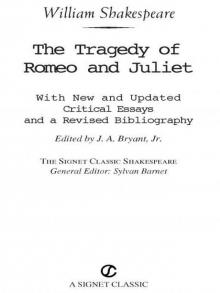 Romeo and Juliet
Romeo and Juliet As You Like It (Folger Shakespeare Library)
As You Like It (Folger Shakespeare Library)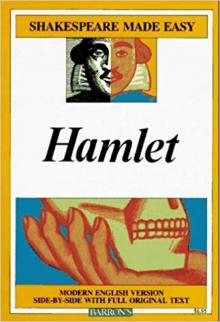 Hamlet
Hamlet Richard II (Folger Shakespeare Library)
Richard II (Folger Shakespeare Library)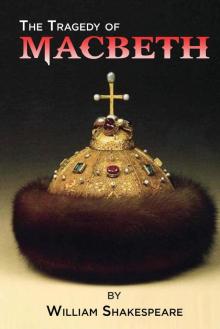 Macbeth
Macbeth Henry V
Henry V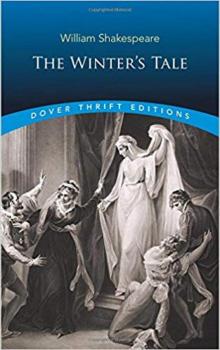 The Winter's Tale
The Winter's Tale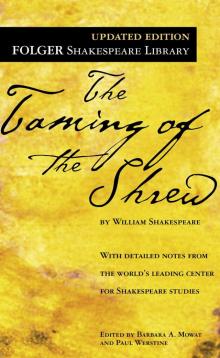 The Taming of the Shrew
The Taming of the Shrew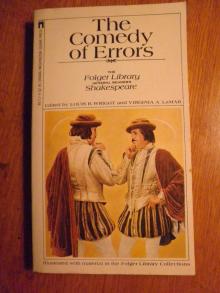 The Comedy of Errors
The Comedy of Errors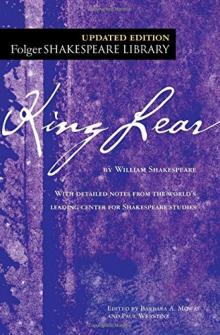 King Lear (Folger Shakespeare Library)
King Lear (Folger Shakespeare Library)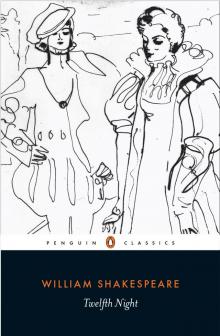 Twelfth Night
Twelfth Night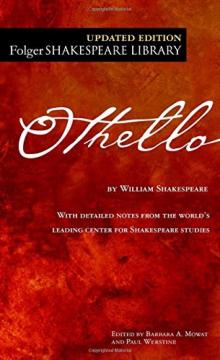 Othello
Othello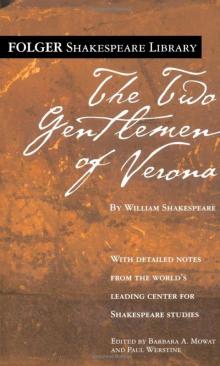 The Two Gentlemen of Verona
The Two Gentlemen of Verona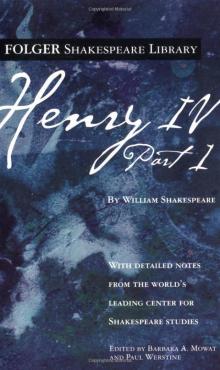 Henry IV, Part 1 (Folger Shakespeare Library)
Henry IV, Part 1 (Folger Shakespeare Library) King John/Henry VIII (Signet Classics)
King John/Henry VIII (Signet Classics)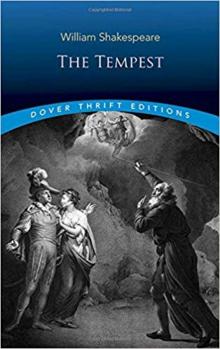 The Tempest
The Tempest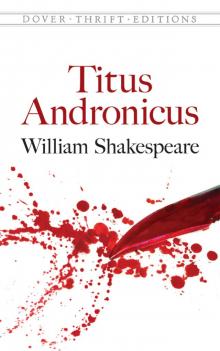 Titus Andronicus (Dover Publications)
Titus Andronicus (Dover Publications)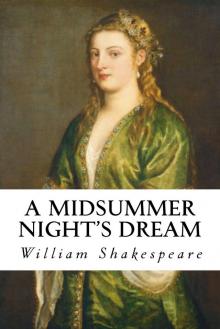 A Midsummer Night's Dream
A Midsummer Night's Dream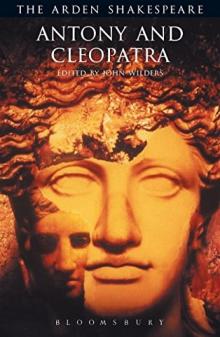 Antony and Cleopatra (Arden Shakespeare: Third Series)
Antony and Cleopatra (Arden Shakespeare: Third Series)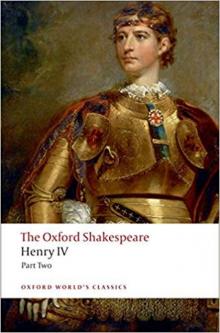 The Oxford Shakespeare: Henry IV, Part 2 (Oxford World's Classics)
The Oxford Shakespeare: Henry IV, Part 2 (Oxford World's Classics)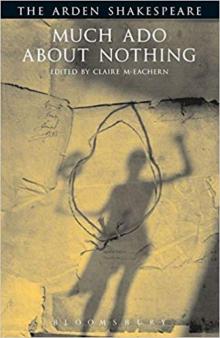 Much Ado About Nothing (Arden Shakespeare: Third Series)
Much Ado About Nothing (Arden Shakespeare: Third Series)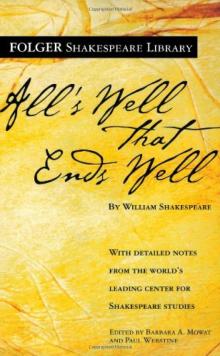 All's Well That Ends Well
All's Well That Ends Well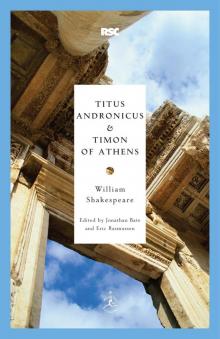 Titus Andronicus & Timon of Athens
Titus Andronicus & Timon of Athens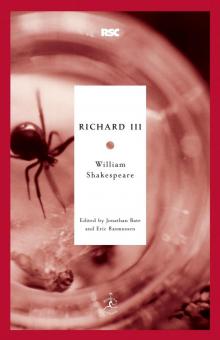 Richard III (Modern Library Classics)
Richard III (Modern Library Classics) Coriolanus
Coriolanus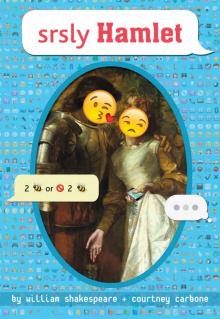 srsly Hamlet (OMG Shakespeare)
srsly Hamlet (OMG Shakespeare) The Merchant of Venice
The Merchant of Venice Richard III
Richard III Richard II
Richard II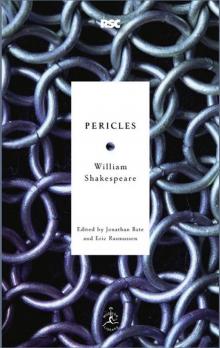 Pericles
Pericles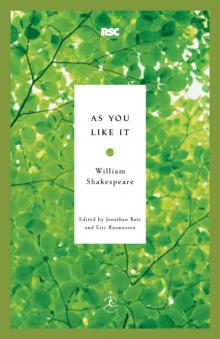 As You Like It
As You Like It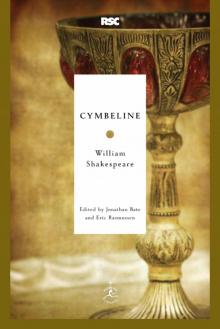 Cymbeline
Cymbeline Alls Wel that ends Well
Alls Wel that ends Well YOLO Juliet
YOLO Juliet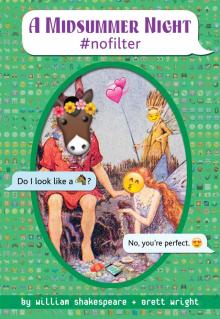 A Midsummer Night #nofilter
A Midsummer Night #nofilter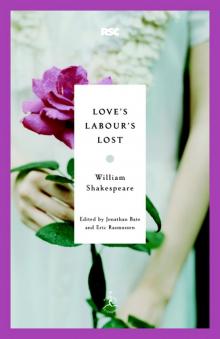 Love's Labour's Lost
Love's Labour's Lost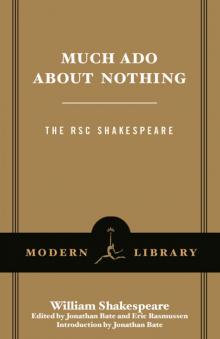 Much Ado About Nothing
Much Ado About Nothing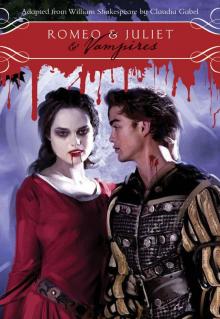 Romeo & Juliet & Vampires
Romeo & Juliet & Vampires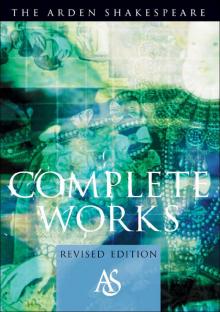 The Arden Shakespeare Complete Works
The Arden Shakespeare Complete Works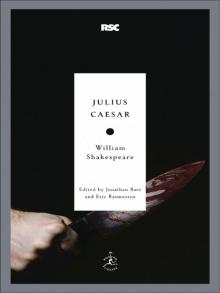 Julius Caesar
Julius Caesar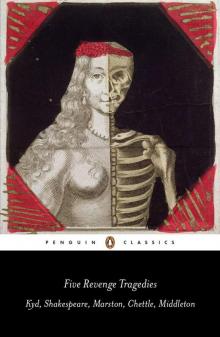 Five Revenge Tragedies: The Spanish Tragedy, Hamlet, Antonio's Revenge, The Tragedy of Hoffman, The Revenger's Tragedy (Penguin Classics)
Five Revenge Tragedies: The Spanish Tragedy, Hamlet, Antonio's Revenge, The Tragedy of Hoffman, The Revenger's Tragedy (Penguin Classics)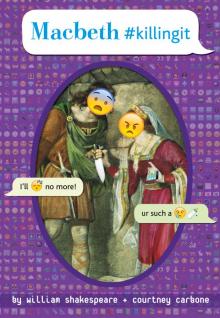 Macbeth #killingit
Macbeth #killingit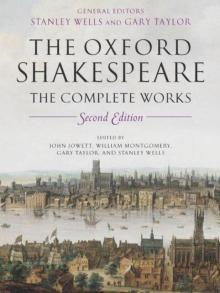 The Oxford Shakespeare: The Complete Works
The Oxford Shakespeare: The Complete Works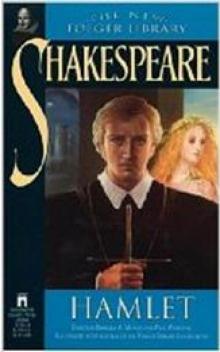 Hamlet, Prince of Denmark (Collins edition)
Hamlet, Prince of Denmark (Collins edition)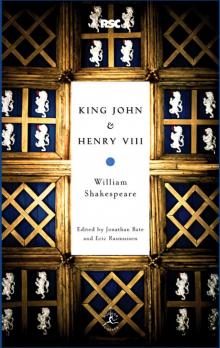 King John & Henry VIII
King John & Henry VIII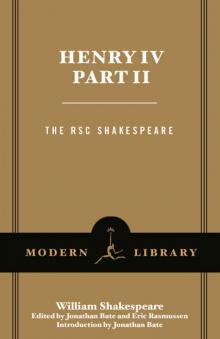 Henry IV, Part 2
Henry IV, Part 2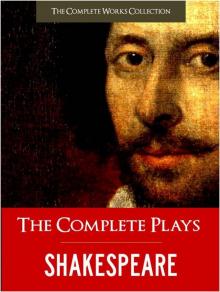 Complete Plays, The
Complete Plays, The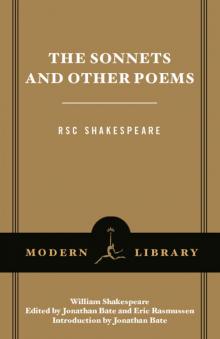 The Sonnets and Other Poems
The Sonnets and Other Poems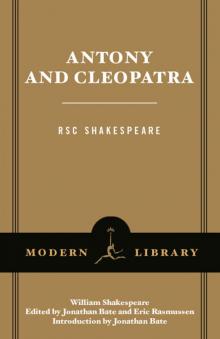 Antony and Cleopatra
Antony and Cleopatra Henry IV, Part 1
Henry IV, Part 1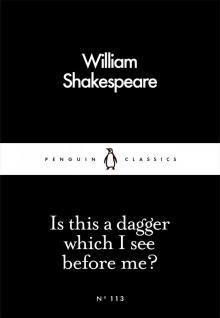 Is This a Dagger Which I See Before Me?
Is This a Dagger Which I See Before Me? The Complete Works of William Shakespeare In Plain and Simple English (Translated)
The Complete Works of William Shakespeare In Plain and Simple English (Translated)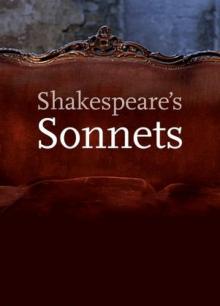 The Sonnets
The Sonnets